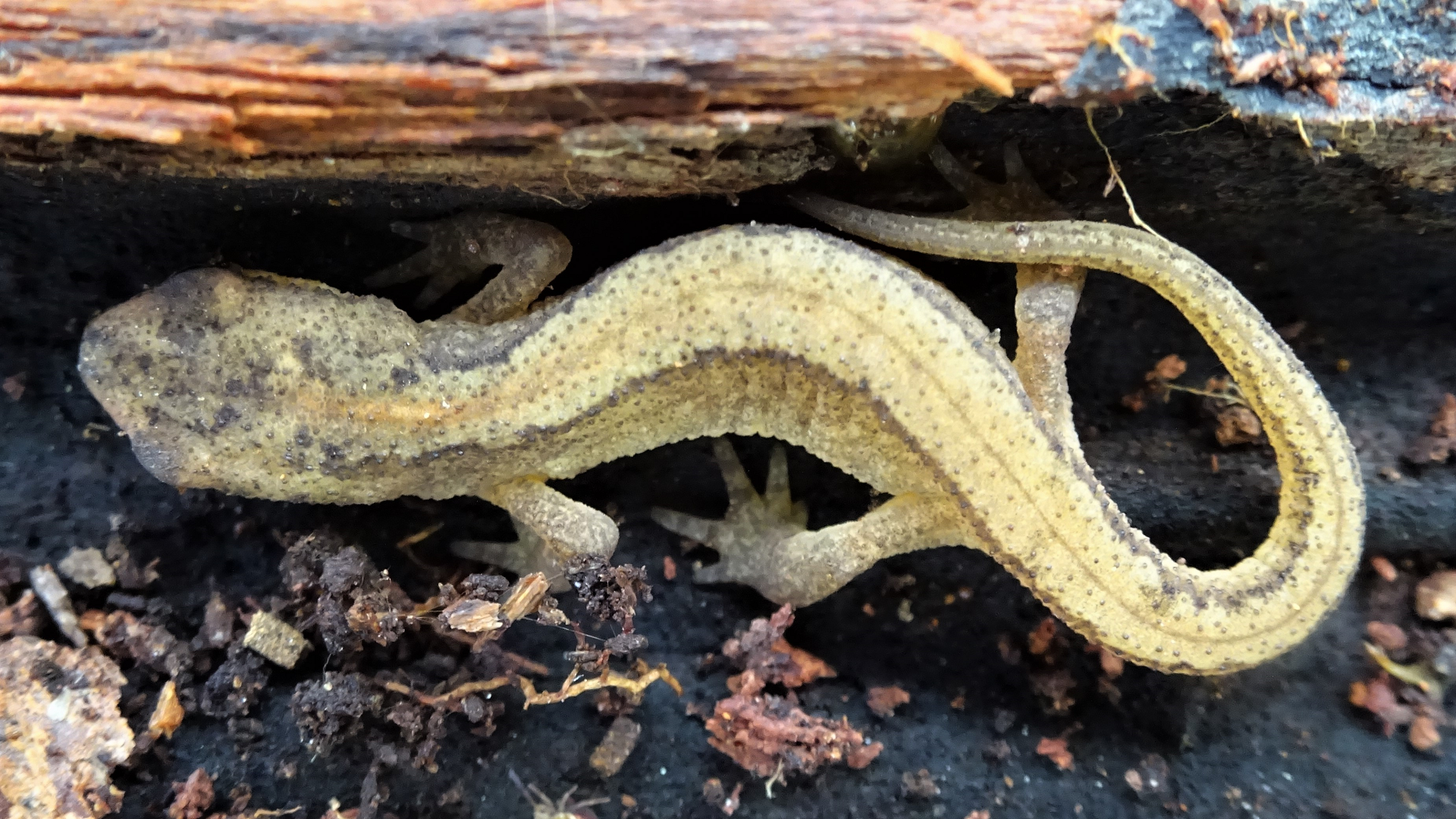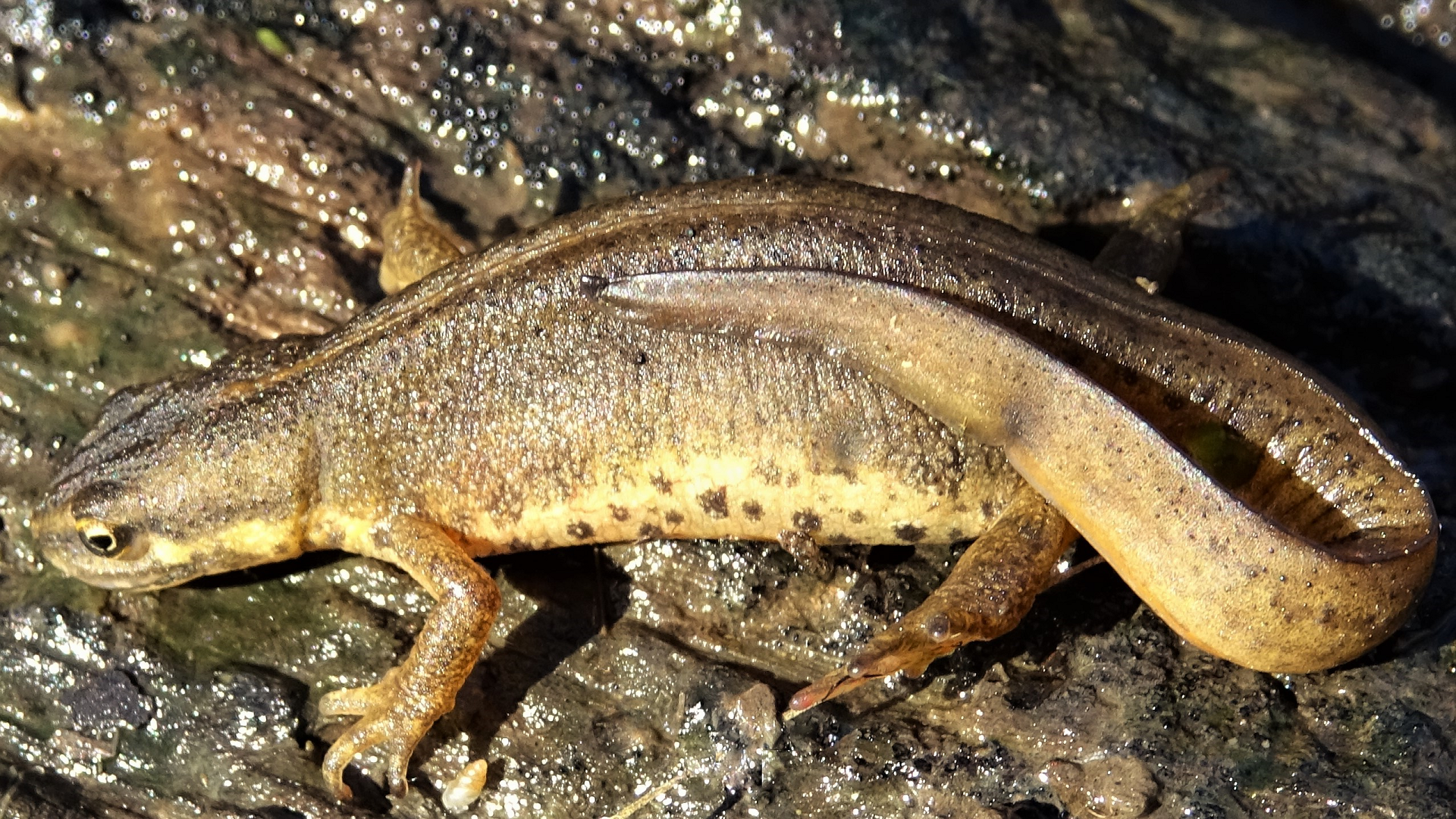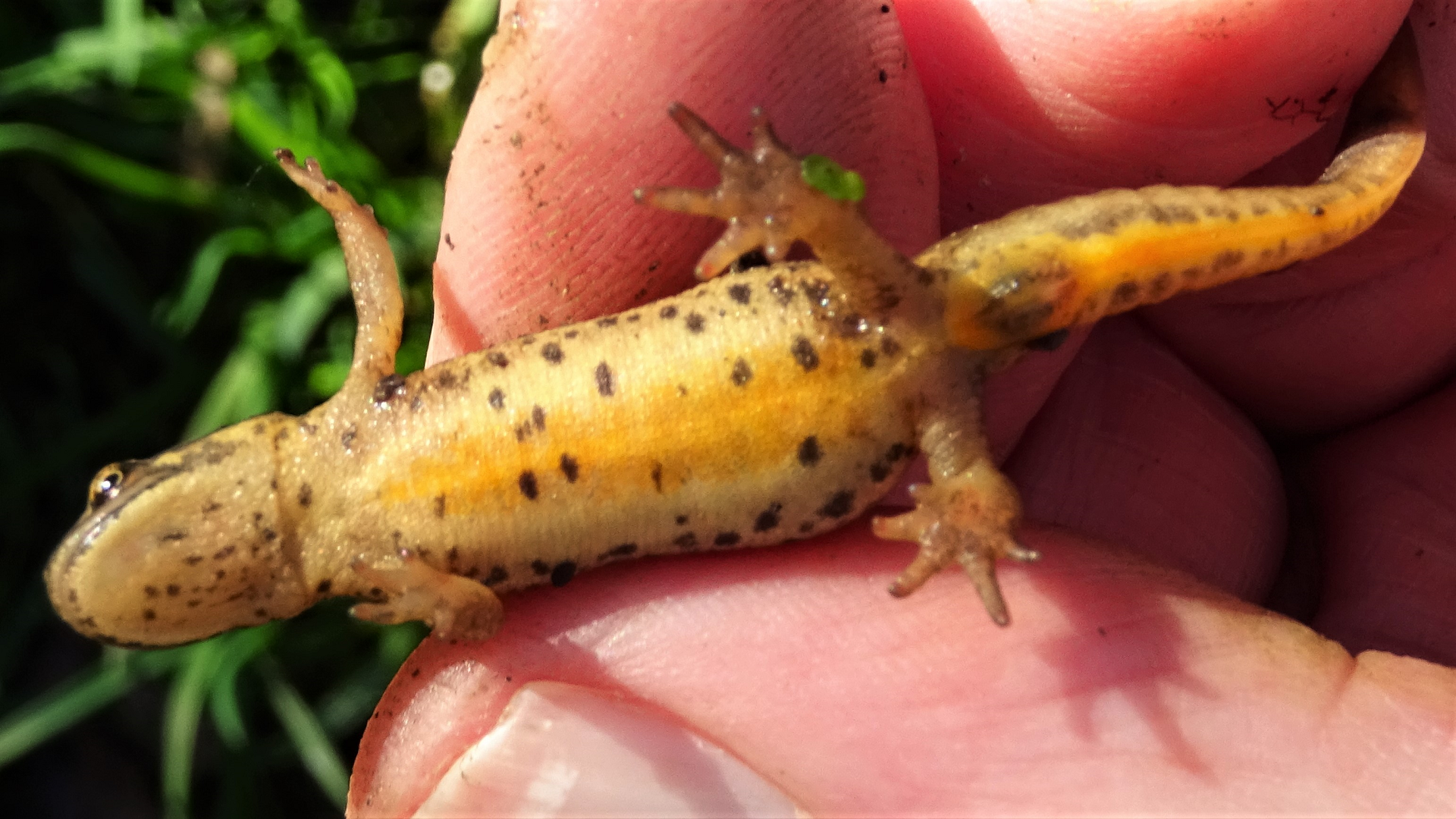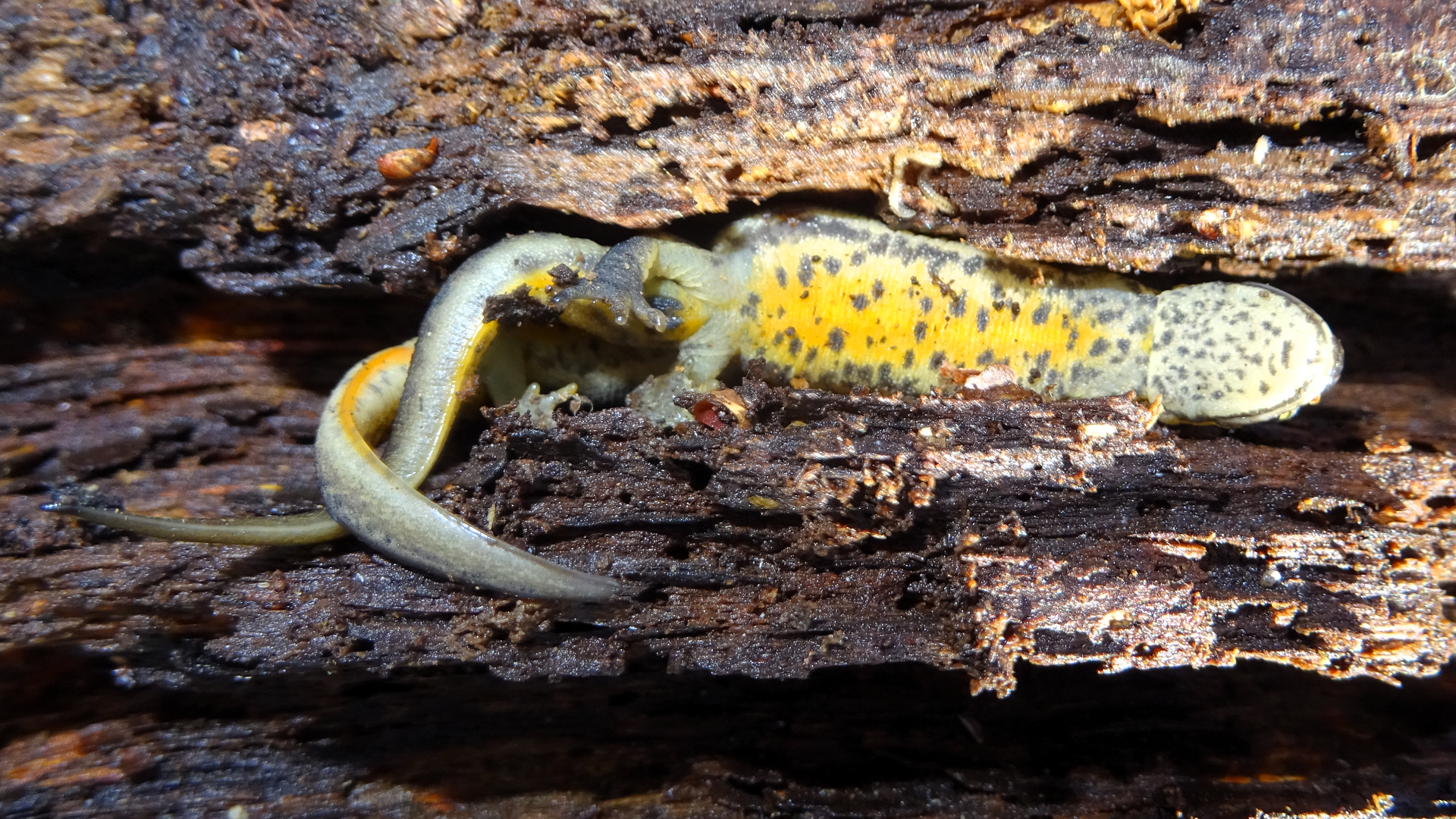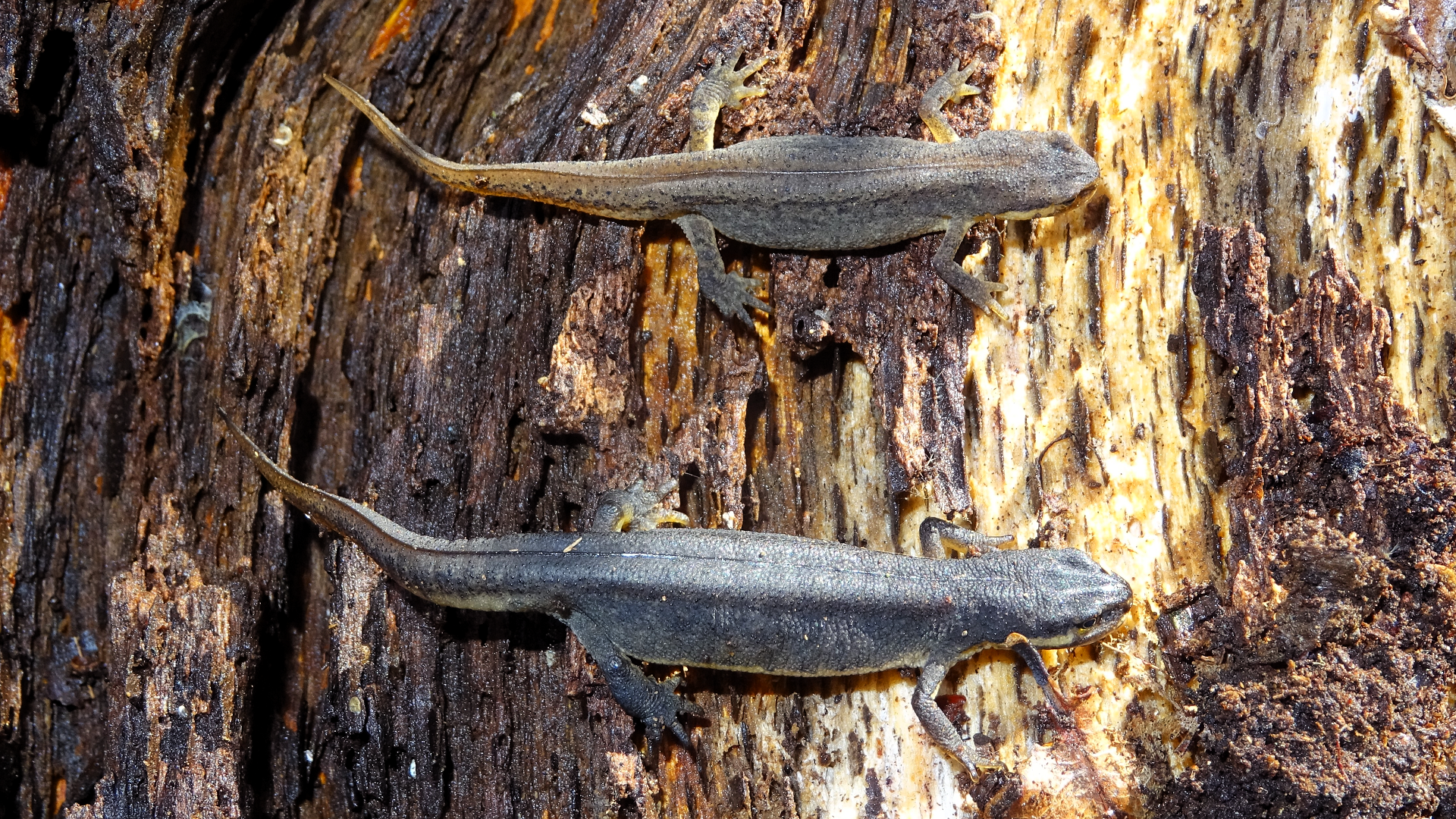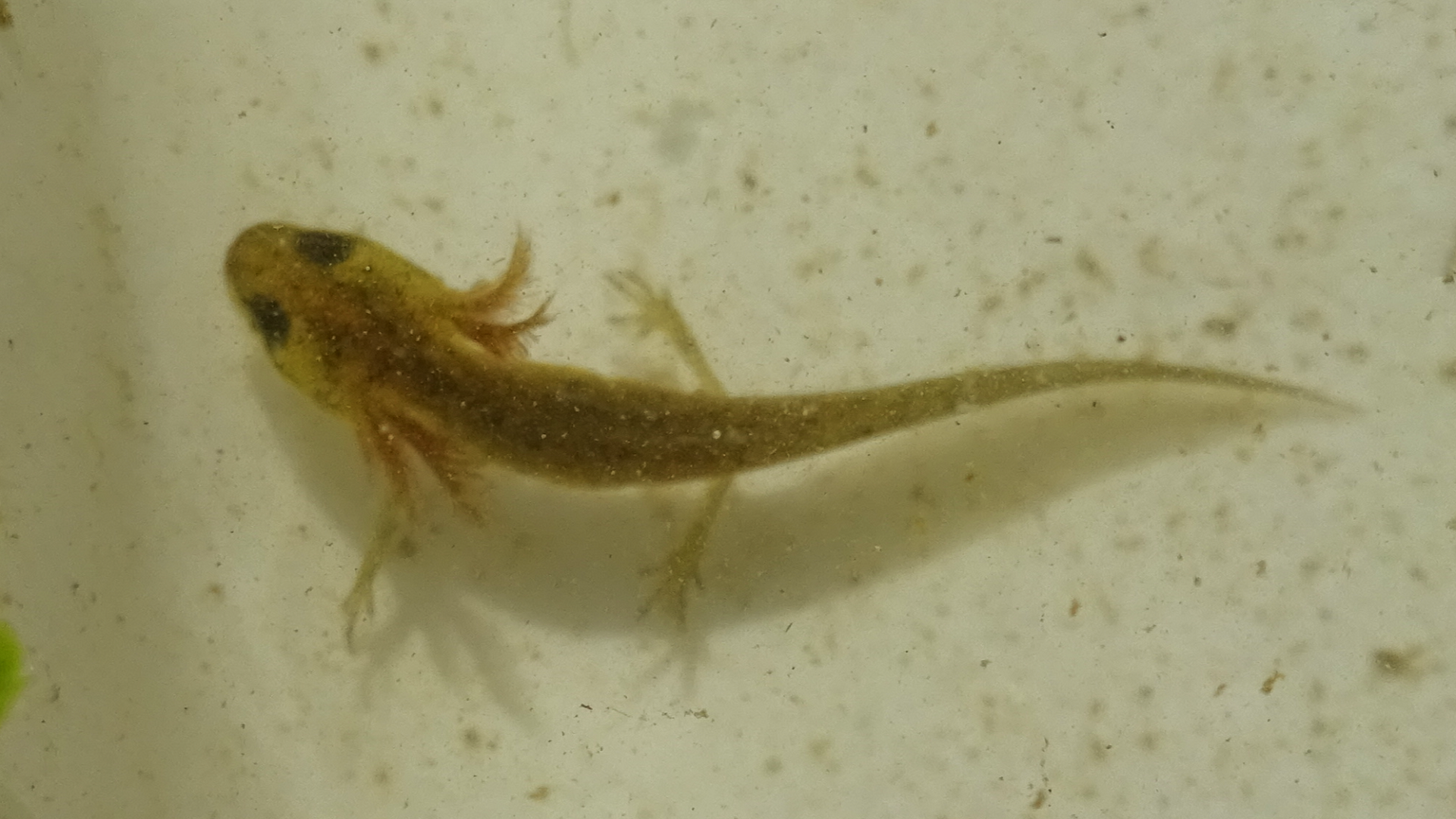AMPHIBIANS
NEWTS
Out of three Newt species in Britain the Smooth Newt is the most common. They are most likely to be seen from March to October. Newts hibernate during winter among tree roots. They emerge during spring to breed in ponds. The remainder of the year is spent feeding in woodland and grassland. They are mostly active at nighttime. Their diet consists of insects, molluscs and tadpoles. Smooth newts are greyish-brown, with an orange belly speckled with black spots. Males have a smooth crest in the breeding season which runs the full length of the body and tail. In autumn and winter the belly becomes duller. They grow to about 10cm in length. Newts lay single eggs on submerged plant leaves. The larvae, referred to as 'Newtpoles' or 'Tadpoles', have feather-like gills behind the head.
© hainaultforest.net. All rights reserved.


